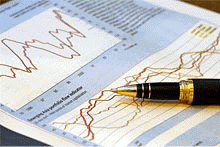

By Roger J Kerr
The window of opportunity that has been open for corporate borrowers over recent months to fix the interest rates on their debt for as much as they could, for as long as they could, started to close last week.
Term swap rates increased as US long-term Treasury Bond yields increased, following the US quantitative easing in monetary policy three weeks ago.
Adding to the upward pressure on five to ten year swap rates was a one-sided domestic swap market with heavy fixed rate paying interest and not much in the way of investor receiving interest. Several large corporate borrowers have issued debt in the US Private Placement market over recent weeks and have been busy utilising the local banks to swap that debt back to fixed rate NZD’s.
On top of that pay-side activity was the BNZ swapping a EUR 1 billion covered bond back into NZD’s.
The 10-year swap rates increase by more than the US 10-year Treasury bonds over the week, shooting up to 5.50% from 5.25%.
As anticipated, all the buying of US Treasury bonds in anticipation of the QE2 monetary policy package took place before the announcement. Once the detail was known, investors and traders alike in US Treasury bonds have been sellers of bond to unwind their long market positions. It is hard to see 10-year US Treasury bonds returning to 2.50% (currently 2.85%) with US economic data expected to improve with the extra monetary policy stimulus.
The window of low rates was open for long enough for all borrowers to lock-in their debt long term. Investors and borrowers should expect that the upward direction of three to 10 year swap rates will continue over coming weeks/months as the “slower to react” borrowers realise that swap interest rates have well and truly passed another bottom and they panic to fix before they go any higher.
The decision to fix long-term at interest rates well above 5.50% will become progressively more difficult to make, as the equation of where 90-day rates may average over coming years becomes much more finely balanced.
My view is that 90-day rates will average between 5% and 6% and thus fixing above 6.00% will probably not be effective hedging in the long run.
Listening to recent speeches from RBNZ Governor Alan Bollard about the economic outlook would suggest that interest rates are going to stay at low levels for a very long time. He surely does influence 90-day and swap rates out to three years forward, however beyond that it is US Treasury bond direction and actions of investors/borrowers.
The smart investors have been shortening portfolio durations and the smart borrowers fixed longer months ago, what Alan has to say has no bearing on the longer-term market drivers.
--------------------
* Roger J Kerr runs Asia Pacific Risk Management. He specialises in fixed interest securities and is a commentator on economics and markets. More commentary and useful information on fixed interest investing can be found at rogeradvice.com
No chart with that title exists.

We welcome your comments below. If you are not already registered, please register to comment
Remember we welcome robust, respectful and insightful debate. We don't welcome abusive or defamatory comments and will de-register those repeatedly making such comments. Our current comment policy is here.